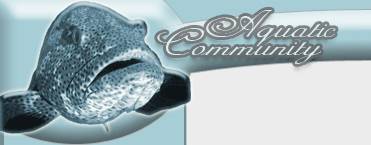Termite Pest Control
Termites are considered pests since they can cause severe wood damage in buildings and other structures by eating the wood. There are over 2,750 recognized termite species in the world, but only a limited number of them are considered pest termites and can cause severe damage to wooden structures, crops and/or plantation forests. A majority of the pest termites are so called dry wood termites or subterranean termites. Regular pest termite inspections are always recommended if you live in an area where these types of termites are present. By frequently carrying out pest termite control inspections, you can detect termite attacks and treat the problem before severe wood damage has occurred.
Pest termite control tip # 1
To carry out successful pest termite control , it is important to understand common pest termite behaviour. One of the habits that have made termites such a shunned pest is how they tend to remain concealed and damage wood without being detected. This means that when a home owner finally notices signs of pest termites, the wood damage is often severe and it is to late for mild pest termite control – the wood must be replaced.
Pest termites will go to great lengths to remain hidden and they strongly dislike being exposed to open air. If given the opportunity, they will stay inside tunnels excavated in wood or earth. If they are forced to cross impermeable substrates, they will create tubes from plant matter, soil and faeces. Such tubes can be several metres long. You can for instance see them on the exterior of trees where the termites need to travel from the soil to a dead branch, via a still living tree that is hard to penetrate.
Pest termite control tip # 2
Realising the wood might not be the only thing in your home affected by termites is another important part of successful pest termite control. Pest termites are famous for their ability to destroy dead wood, but once they have infested a home they will not hesitate to feed on a wide range of other cellulose-based materials. Pest termites can for instance eat paper, cloth and several types of carpets. Non-cellulose types of materials can be used for gallery construction, and termites can therefore also damage plaster, soft plastics, silicon sealants, rubber, acrylics and a wide range of similar compounds.
Pest termite control tip # 3
Using the right type of pest termite barriers is one of the most important aspects of successful pest termite control . As mentioned above, pest termites do not like to travel out in the open. They will therefore prefer wooden constructions where they can gain access to the wood directly from the soil. Refraining from setting up this type of buildings is an essential part of preventive pest termite control .
A majority of the common pest termite barrier systems will strive to prevent concealed termite access. If the pest termites are forced to travel out in the open, they will form visible tubes that make it much easier for the home owner to spot an early termite attack and carry out active pest termite control .
Several types of barriers can be used to deny the pest termite colony direct access to the wooden parts of your home. Some of the most popular barriers used for pest termite control are termite-resistant concrete, masonry and steel foundations. Poisoned soil has been used for pest termite control in many countries since the 1970’s, but today most experts agree that solid termite barriers are a better alternative for new buildings. It should be noted that no termite barrier is 100 percent effective. Pest termites will sometimes show remarkable strength and persistence and are for instance known to chew through lead pipes and plastic tubing to gain concealed access to homes.
Another important aspect of pest termite control is to choose the right type of wood for your home. You can for instance use timber that has undergone special pest termite control treatment. A second alternative is to use timber from trees that have a natural resilience towards termites, such as White Cypress (Callitris glacophylla)or Turpentine Tree (Canarium australianum). The resilience against termite attacks can vary considerably from tree to tree even within the same species.
Termite Articles:
Termite Facts
Termite Control
Termite Inspection
Termite Home Inspection
Termite Inspection Cost
